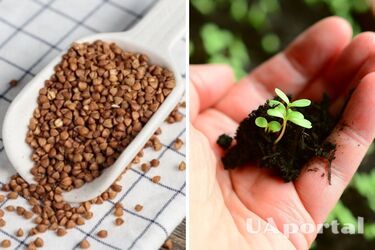When you have a surplus of buckwheat: How to make fertilizer for plants from grains

Some homemakers accumulate large quantities of buckwheat in their kitchens, sometimes so much that they can hardly consume it before the expiration date. In such a situation, there is no need to discard this product, as it can be used to create a beneficial fertilizer. This method can be especially useful for gardeners who grow seedlings.
Read also: Five plants that need little light
Anastasiia Kovryzhnykh, an agronomist and landscape designer who collaborates with the BelNovosti online publication, explains how to transform buckwheat into an excellent fertilizer.
To prepare this fertilizer, simply place buckwheat in a deep container and cover it with clean water in a ratio of one spoonful of buckwheat to 300 ml of water. Then let this mixture sit for 24 hours.
After this time, a significant amount of trace elements present in buckwheat will be released into the water. Buckwheat contains potassium, phosphorus, calcium, magnesium, and other beneficial elements for plants.
The resulting fertilizer should be filtered to separate the buckwheat residue from the liquid and then diluted by half by adding a new portion of clean water.
The resulting liquid can be used to water the seedlings. It is advisable to perform this procedure weekly so that the plants receive all the necessary trace elements.
Furthermore, this buckwheat fertilizer can be used not only for seedlings but also for indoor plants to provide them with the necessary nutrients.
It is worth noting that most indoor plants are quite safe, but some of them are toxic to children and animals. Leaves, sap, or bulbs can be toxic.
If you want to get the latest news about the war and events in Ukraine, subscribe to our Telegram channel!
